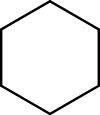
I've spent a few days googling functional groups and reading my text assigned on organic functional groups. I'm understanding very little and I just need a little clarification. I understand that at the top right and bottom left, the hexagon structure signifies an aromatic, right?
Top Left: My first guess was carboxylic acid, but with further googling, I now think it's an amide, because it contains nitrogen and oxygen?
Top Right: Since the hexagon is aromatic, I know it can only be the last three choices, but I'm going with C because the $\ce{-NH2}$ is not connected to an oxygen.
Bottom Left: Because of the $\ce{Br}$, I know it's a bromide and, assuming that my thinking is correct with aromatic, the answer should be B.
But the bottom right, I am not sure what exactly to look at here to even guess, besides that it is not an aromatic ring.
To show that I've tried the last one, all I can find is that an alkane is $\ce{CH4}$, alkene is $\ce{H2C=CH2}$, and an alkyne is $\ce{HC#CH}$ and, the aromatic being the hexagon structure, I'm unable to grasp/understand which one the last group would fall into.



